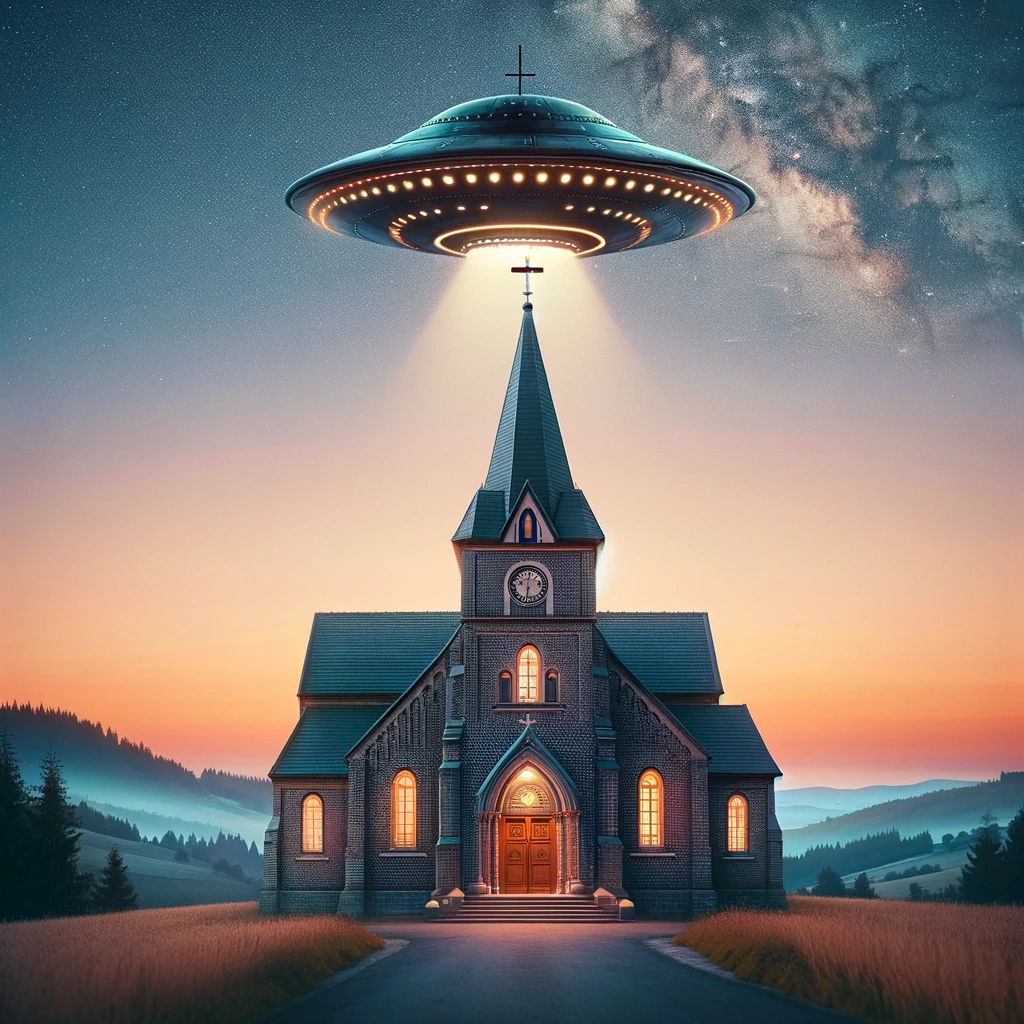Extraterrestrial Intelligence and the Catholic Faith

In a recent episode of “Reality Check” on NewsNation, hosted by Ross Coulthart, a fascinating discussion unfolded regarding the intersection of religious beliefs and the concept of extraterrestrial intelligence. The segment featured Congressman Tim Burchett from Knoxville, Tennessee, a member of the so-called UAP caucus advocating for transparency in government disclosures on non-human intelligence, and Dr. Paul Thigpen, a retired professor with a rich background in religious history and theology.
The conversation commenced with an exploration into how major religious texts, including the Bible and Quran, might reference extraterrestrial life forms and UFOs. Thigpen, with his transition from atheism to Protestant pastor and eventually to Catholicism, brought a nuanced perspective with his book “Extraterrestrial Intelligence and the Catholic Faith.” The dialogue touched upon various biblical passages that seem to describe anomalous, potentially extraterrestrial events, such as the ascension of Jesus into heaven amid a cloud in Acts 1:9 and the vivid visions of Ezekiel, which some interpret as descriptions of UFOs.
Non-Human Intelligence (NHI) is described primarily in the context of religious beliefs and their potential connections to extraterrestrial life. Dr. Paul Thigpen, a retired professor of religious history and historical theology, outlines that NHIs in the religious sense typically refer to beings like angels, which are considered purely spiritual entities created by God. These beings, including angels and demons (fallen angels), are distinct from humans and do not possess physical bodies. They are capable of acting upon the physical world but do not occupy space in the same way that material beings do.
Burchett shared his belief that the Bible’s references to otherworldly phenomena do not conflict with his Christian faith but rather enhance it, suggesting a vastness to God’s creation beyond Earth. The discussion also looked into the portrayal of angels in religious texts as non-human intelligences, with Thigpen clarifying the Catholic understanding of angels as purely spiritual beings distinct from the notion of extraterrestrial creatures.
The program further explored the Vatican’s stance on life beyond Earth, noting the Catholic Church’s historical engagement with astronomy and its progressive approach to the possibility of extraterrestrial intelligence. Coulthart highlighted the intriguing relationship between Pope Francis and an Argentine Jesuit priest known for his interest in UFOs, suggesting the Vatican might possess more knowledge about non-human intelligence than it has disclosed.
Also discussed was the Vatican’s possible decision to transfer a non-human craft to the U.S. after World War II. This incident was known as the 1933 Magenta Italian UFO incident. This transfer to the U.S. could have been motivated by a desire to ensure the technology did not fall into the wrong hands, such as those of Axis powers or other potentially hostile entities. Entrusting the artifact to the U.S. might have been seen as a way to safeguard its use and study under a more controlled and possibly ethical framework, reflecting the complex geopolitical landscape of the post-war era.
The segment also addressed concerns within the UFO community about potential demonic influences in UFO phenomena, with Burchett expressing caution over practices that might invite such dangers. Thigpen acknowledged the overlap between some UAP encounters and diabolical profiles but cautioned against branding all UAP experiences as demonic.
As the discussion concluded, both guests reflected on the implications of extraterrestrial life for religious belief and the potential role of religious institutions in understanding and engaging with non-human intelligence. The conversation underscored the complexity of reconciling ancient religious doctrines with contemporary questions about life beyond our planet, leaving viewers with much to ponder regarding the mysteries of the universe and the divine.


